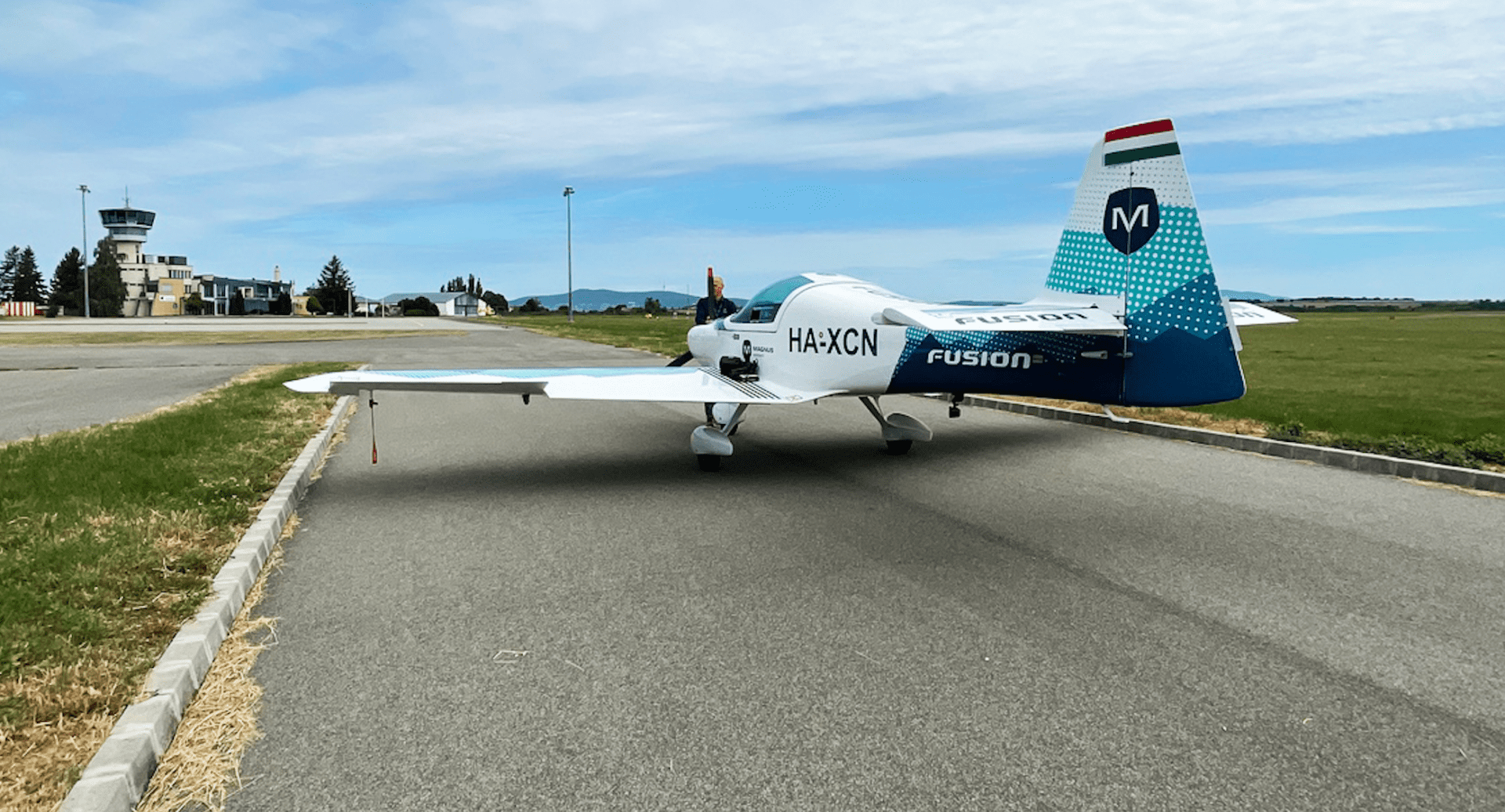The Flight of the Magnus Fusion
Magnus Aircraft, an up-and-coming Hungarian venture, has created a two-seater aeroplane that managed to cross the Atlantic Ocean. The trip took eight days. They flew for fifty hours, passed through nine countries, and 8,000 kilometres later, they arrived at their destination. The plane took off on 18 August from the Hungarian Pécs-Pogány airport. The iconic product made by the company, named Fusion 212 has written history, since no Hungarian small aircraft has ever flown this far.
The aircraft received a reserve fuel tank, making it possible to fly about 1,600–1,800 kilometres with one refuel. To be on the safe side, the pilot, Roy Ritter also packed a rescue boat, a parachute and a satellite phone. Passing through Belgium, Iceland, Greenland and Canada, the planer arrived in New York, and held several airplane parades on the East Coast. It will reach its final destination in October, arriving at DeLand in Florida, where the subsidiary company of Magnus has their assembly line. This was not the first long trip the Magnus Fusion undertook. Some years ago, pilot Zoltán Földi and photographer Kálmán Hankusz flew around the Mediterranean Sea.
While the Company is Small, Their Success is Huge
The Hungarian company is already getting orders for planes from Africa, where they would utilize their inventions for military purposes, and they also broke into the Chinese market, which is an accomplishment by itself, because they are the first foreign plane manufacturer to land a contract with the Asian country.
Magnus Aircraft Zrt. was established in 2011, and they started operation in 2014 in Kecskemét, Hungary. In 2018 they moved their base of operations to Pécs, where they created the traditional combustion engine small plane, the Magnus Fusion. The plane’s unique design was developed by Magnus. Thanks to its carbon-composite body, the aircraft is strong and light at the same time. It only weighs 410 kilograms, slotting itself into the ultralight category, while being so strong structurally that it matches the dimensions of a plane in the very light sport category, where planes weigh 750 kilograms. The challenge Magnus is facing is that the new company is competing with much more established and experienced rivals that have already built a strong reputation and brand.
‘Flying over the ocean was basically about us showing others that our plane is mechanically ready and is able to complete without errors a task that few others would undertake. Despite only being in the field for five or six years, our product is good and ready to face the competition,’ László Boros, CEO of Magnus Aircraft Zrt. told Mandiner.
African Orders
The Pécs-based manufacturer received large amounts of attention last year, when they came to an agreement with the Nigerian Airforce, which ordered twenty composite-bodied planes from Magnus. This meant that the plane that originally was meant to be used for hobby flying is now being used for military purposes. They will create two separate versions of the plane. One of them is a two-seater that will be used for pilot training, while the other one is fitted with a state-of-the-art camera system that will allow it to conduct reconnaissance and mapping missions. These will be used in the fight against the Nigerian Boko Haram Islamist terror group. As the area where the fights take places has a lot of elevation changes, these planes will be able to pinpoint the exact location of terrorist bases. Another competitive advantage of the planes is that because they utilize a combustion engine, filling it up with petrol is much cheaper than it would be with kerosene.
First in the Chinese Market
Their biggest chance toward global recognition, however, is the contract landed with a Chinese company. After four years of hard work, Magnus Aircraft managed to enter the market of the largest Asian country.
‘Getting approved was the hardest. It included a lot of paperwork, discussion and auditing, but as of 24 December last year, we got the go-ahead for our planes as a Christmas gift,’ the CEO said. ‘The papers could not have arrived at a better time, as Chinese airspace is becoming really free now, meaning that common folk are allowed to fly planes. There is a significant amount of people there who could afford to fly, so this is the wave we are trying to ride,’ László Boros explained.
Initially, they are planning to ship planes to a pilot school. Luckily for Magnus, there are facing no competition in the Chinese market for the time being. ‘During these four years many have asked us why we are fighting for a Chinese contract, and now we are the first cross the finish line,’ the CEO explained, adding that they will create a base of operations with production in the country so they can meet the huge demand.
The company is planning to build a complex of 18 thousand square metres, that would include a showroom, and a facility for production and repairs. Additionally, they are also working together with Hungarian Óbudai University to create a development centre. If all these plans materialise, over 2,800 Fusion planes and about 400 four-seater planes will be manufactured in the next nine years.







